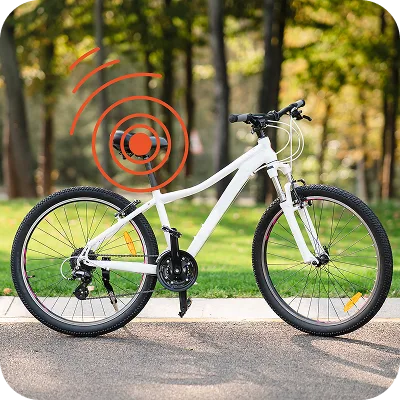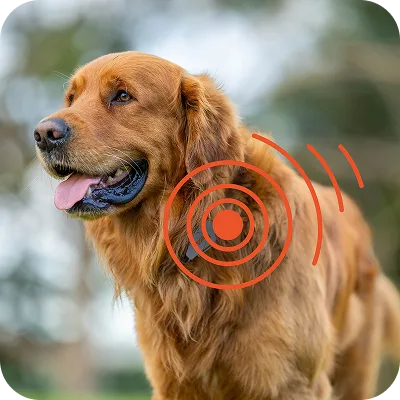GPS Drop Alert in Car Security and How It Works
A drop alert is a special anti-tamper alarm in GPS tracking devices that triggers when the tracker is tampered with or physically removed from the vehicle or surface it’s attached to.
In other words, if someone lifts the GPS tracker off its mounting, the device will immediately send an alert to the owner.
This feature is specifically designed to warn you that someone might be tampering with the tracker (and potentially trying to turn off your car’s security system).
Working principle behind Drop Alert
Since there are tamper sensors under GPS trackers, the removal or dismounting can cause drop alert messages. These sensors are depressed or covered; if the device is pried off, the sensor changes state and triggers the alert.
Typical implementations include small spring-loaded switches or light sensors on the underside of the unit. Many devices introduce a short arming delay to avoid false alarms. In practice, the moment a drop sensor registers that the unit has been detached, the tracker uses its communication module (cellular SMS, app notification, or even an automated phone call) to send a tamper alarm. One commercial example notes that the drop alert is automatically armed on attachment and that the owner will receive an immediate alert by call or text as soon as the device is removed. This technical design ensures the tracker can still alert you even if a thief disconnects the car’s power, because most trackers have an internal backup battery to communicate the drop alert when tampered with.
Why Drop Alerts Are an Effective Anti-Tamper Measure
A drop alert is one of the most direct indicators of tampering: it tells you that someone has physically accessed your GPS tracker. This is crucial because seasoned car thieves often try to locate and disable GPS trackers early in a theft attempt. If a thief tries to rip off a magnetic tracker or unplugs an OBD plug-in tracker, the drop alert will immediately let you know. In essence, the drop alert serves as an electronic “tripwire” on the tracking device – if an intruder tries to disarm your GPS tracker, you’ll know right away.
Another reason drop alerts are so effective is that they specifically monitor the integrity of the security system itself (the tracker), not just the vehicle. Features like motion or ignition alerts (discussed below) might tell you that your car is being moved, but only a drop alert tells you the tracker has been tampered with. This added layer of information is invaluable during a theft in progress. For instance, if you receive a drop alert at 3 AM, it’s a strong sign someone found your tracker – a scenario in which you’d immediately take action (since a thief who removes the device is likely attempting to steal the car). Industry guidance increasingly highlights tamper detection as a vital addition to GPS trackers.
In summary, a drop alert is effective because it focuses on the one event that thieves have to do to defeat other security measures – physically disabling the tracker – and it lets the owner know as soon as that event happens.
Comparison to Other Anti-Tamper Features
Modern GPS car security systems use a combination of alerts to detect tampering or unauthorized use. Below, we compare drop alerts with three other standard features: vibration/motion alerts, ignition detection, and geofencing. Each plays a different role in protecting against tampering or theft, with its own advantages and limitations.
Vibration / Motion Alerts (Shock Sensors)
Many GPS trackers include a vibration or motion alert that detects if the vehicle is jostled, bumped, or moving when it shouldn’t be. These work via an internal accelerometer or shock sensor. For example, a tracker can be set to send an alarm when it is shaken or moved abnormally, according to paj-gps.com.
In practical terms, if someone tries to break into or tow your car, a vibration sensor can pick up the sudden shakes (door forced open, window smashed, car being lifted) and alert you before the vehicle is even moved from its spot.
Advantages: Vibration alerts cover a broad range of suspicious activity. They can act as an early-warning system for tampering – even if a thief hasn’t found your GPS tracker, any aggressive contact with the car (or with the tracker’s mounting) may trigger the sensor. This means you might catch a theft attempt in its very first moments (for instance, the car being jacked up or struck) rather than waiting until the tracker is removed or the car leaves a geofence. Another benefit is that motion/shock alerts are generally available on all types of trackers (wired, battery-powered, OBD, etc.) and don’t require special installation; it’s essentially a software setting using the device’s accelerometer.
Limitations: The main drawback of vibration-based alarms is the potential for false alarms or noise. Normal environmental vibrations or innocent events can sometimes set off the sensor – for example, a heavy truck driving by, a person bumping into your parked car, or even a strong thunderclap could generate a brief alert. Good devices allow sensitivity adjustment, but some level of false alert risk is inherent since not every vibration is a theft.
Moreover, a vibration alert doesn’t tell you what caused the movement. Unlike a drop alert, which specifically signals “the tracker was removed,” a motion alert could be anything from a door slam to a tow truck. This is an extra burden for the user, as the user might need to interpret the context. Yeah, sure, he can check a camera or go physically check the vehicle.
Ignition Detection (Engine On/Off Alerts)
Ignition detection is a feature mostly found in hardwired or OBD-II plug-in GPS trackers. These devices monitor the vehicle’s ignition circuit (ACC) and can tell when the engine is turned on or off. When the car is started, the tracker immediately sends an alert indicating the ignition status has changed.
This is extremely useful for theft prevention because if you know your car is supposed to be parked (for example, in the middle of the night) and you receive an “ignition on” alert, it’s a clear sign of unauthorized use.
The reliability is high: unlike motion sensors, the car’s engine doesn’t accidentally turn on by itself, so false positives are rare.
Essentially, an ignition alert tells you your car has been started.
Advantages: Ignition detection provides immediate and unambiguous information that a vehicle is being operated. It’s a strong anti-theft indicator because most car thefts involve starting the engine (unless the thief tows the vehicle). The moment a thief hot-wires the ignition or uses a cloned key to start the car, the tracker will notify the owner. This can buy crucial time to respond (such as engaging a remote immobilizer if available, or calling the police with real-time location). Because it’s tied to the car’s electronics, there are virtually no false alarms – if you get an ignition-on alert, you can be highly confident the engine is actually running. Some advanced trackers even let you immobilize the engine remotely as a response, although that’s a separate feature (kill switch) beyond detection. Another plus is that ignition alerts can help in non-theft situations too (like alerting you when a valet or teen driver starts the car), but in the context of tamper/theft, it’s mostly about catching unauthorized startups.
Limitations: The necessity of being wired into the vehicle’s electrical system is both a strength and a weakness. Installation is more involved – a hardwired tracker needs to be connected to a constant power source and the ignition/ACC line.
The Car and Driver guide notes that hardwired units are typically hidden behind the dashboard and tied into a fuse box or ignition line, whereas simple plug-in trackers go into the OBD port caranddriver.com.
This means ignition detection is not available on small battery-powered standalone trackers (those rely on motion instead).
Additionally, a savvy thief could circumvent an ignition alert by not using the ignition at all – for example, towing the car with the engine off or first locating and disabling the tracker (where a drop alert would then be the feature that saves you). If an OBD plug-in tracker provides ignition alerts, a thief could simply unplug it from the OBD port during the theft; many plug-in units have backup batteries and will send a tamper/power-disconnect alert in that case, but if the device is entirely removed, you lose the ability to monitor ignition thereafter. In summary, ignition detection is superb for catching a thief who starts the car, but it won’t help if the vehicle is moved without starting (towed) or if the tracker never gets the chance to see the ignition event (because it was removed or disabled first). It also cannot directly tell you about device tampering – only that the car is running.
Geofencing Alerts (Virtual Boundary Alarms)
Geofencing allows you to create a fenced zone on the map, and triggers an alert if the GPS tracker crosses that boundary. Users typically define one or more safe zones – for instance, a 500-meter radius around their home or a specific region like the city limits. Geofence alerts are widely used as anti-theft and unauthorized-use alerts. For example, if your car is parked at night and you’ve set a geofence around your neighborhood, you’ll get an alert the moment the car moves out of that zone, indicating a likely theft in progress.
Advantages: Geofencing is very effective for detecting a stolen vehicle, especially in cases where a thief might not trigger a vibration or hasn’t been detected yet by other means. It serves as a last line of defense: even if a thief somehow got into your car without setting off a vibration alert and started driving it (perhaps they found and avoided the tracker, or the tracker wasn’t equipped with drop/motion sensors), the moment the car leaves its permitted zone, you’ll be alerted. Geofence alerts can cover scenarios that other alerts miss.
For theft response, a geofence alert provides a clear indication that the vehicle is on the move and can be paired with live tracking to guide police to the car’s current location.
Limitations: The primary limitation is that geofence alerts are not instantaneous in the smallest sense – they trigger once the vehicle actually crosses the boundary you set, which could be after the theft has already progressed some distance. If your geofence is large (say, entire city boundaries), the thief might drive a few miles before you get an alert.
Another limitation is that trackers have to remain active. I
If the thief disables the tracker before leaving the zone (for example, by a drop alert scenario or by destroying/jamming the device), then the geofence breach might never be reported. Geofence alarms also do not specifically tell you how the vehicle left the area – just that it’s no longer where it should be. Compared to a drop or vibration alert, a geofence alert is a bit more “after the fact,” helpful in responding to a theft (by tracking the car) rather than preventing tampering in the first place. Finally, geofences require a one-time setup in your tracking app or platform.
Advantages and Limitations of Drop Alert vs. Others
From the comparisons above, we can see that Drop Alerts offer a unique advantage: they directly monitor the status of the tracker (the core of the security system). This makes them extremely valuable in scenarios where a thief’s first move is to tamper with or remove the tracking device. In contrast, features like vibration and geofence monitor the vehicle’s movement, and ignition detection monitors the vehicle’s usage. A drop alert essentially says “Someone is attacking your security device right now,” whereas the others say “Someone might be stealing/moving your car.” In a well-designed car security setup, drop alerts and the other features work together for layered protection.

























